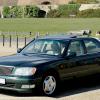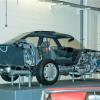Leaderboard
Popular Content
Showing content with the highest reputation on 01/12/2016 in all areas
-
2 points
-
1 point
-
Have driven company cars for the most part. Sierras, Passats, Accords etc. When it came to owning my own car about 10 years ago I went for Saab. Have had 2 Saab 9-5s and the last two we had (at the same time) were 2 9-3 Aeros, a Spacewagon (estate) and a Convertible. Marvellous cars, if they were still being made I probably wouldn't have discovered Lexus. Have no inclination whatsoever for BMW or Audi, I am unable to drive in such a selfish and arrogant manner !1 point
-
Alfa? I you are a brave man sir! I take my hat off to you! You are not a true petrolhead if you have never owned an Alfa. Alas I do not have the testicles to take the risk!1 point
-
I've had 5 Alfa's so that make me super underdog if you read the reviews :) But I still love them.1 point
-
I would not describe this as choosing the "underdog" - you are obviously a person who does not wish to follow the crowd. I also like cars that are more exclusive and I would concur with your choices! I would choose "Japanese" over Germanic makes everytime. Had a Golf, had a BMW 5 series - no thanks!1 point
-
I had that mk1 with the aero kit. I really liked it for what it was. 256hp as standard, half leather interior, Bose sound system etc etc. Torque steer is limited in first and second as well as depending on steering wheel angle. It all helps but does not eliminate torque steer completely. The aero is the one to go for as it comes on lowered eibach springs. It's a lot bigger than your mates car and will feel it. Still handle well when compared to its competition and posts similar lap times. Easily tuneable being a turbo but I believe you need to start replacing internals over 300ish bhp. It's a pretty quick, very practical, good handling hot hatch. I never drove the mk2 so not sure about those.1 point
-
also check the cylinder barrel etween the petrol flap and boot release pull is not pressed in1 point
-
1 point
-
hi phil thats correct - the whole hub gets replaced - i understand it is a quick job - just 4 bolts to remove the hub - i cannot see it taking more than an hour tops - i have just done a quick search on ebay and prices start at around £60 for an aftermarket part - this should give you an idea of how much to pay for the leather i use gliptone leather cleaner - if the seat is really dirty give it good 2-3 cleans with this stuff doing a small section at a time - it has evaporating qualities which work well with the perforated leather. Then finish off with gliptone leather feed hope this helps1 point
-
I bought this and it works a treat in the boot of my IS250. http://www.ebay.co.uk/itm/171923362167?_trksid=p2057872.m2749.l2649&ssPageName=STRK%3AMEBIDX%3AIT1 point
-
If you have old bath towels, put one in each footwell to soak up moisture, then change them for dry ones whilst the others tumble dry off. I'm hating this stupid constant wet weather at the moment, too. A couple of dehumidifier 'boxes' from poundland (or Tesco) can help or failing that a load of uncooked rice in an open lidded Tupperware style box will help soak moisture up inside the car.1 point
-
Thanks Mike. It has been looked after but not cosseted - and it's now 18 years old. It doesn't feel its age. What amazing cars they are!1 point
-
That's ridiculous, I don't even know where to start on how bad the service you received was. I bet they didn't even change your cam and drive belts either... Assholes. The least they could do is charge you cost price for the water pump (<£90), and fit an air con compressor (which you source and supply) free of charge...1 point
-
Hello all, I'm Alex, 28 from Darlington. Just sold my JDM hawkeye impreza and its time for a new project. I found the forum whilst researching a supercharged Lexus IS200. Looks like i'll be going the custom route as the chances of finding a TTE kit for decent money is looking unlikely. Anyways thought i'd post a few photos of my cars past and present below including my IS200 sport which I've had since Saturday must say I'm loving the car so far so nice to drive. My dad bought a new IS200 SE in 1999 and a Sport a few years after and always wanted one since then so great to finally see why he liked them so much. My first car - Yaris SR MR2 Rev 3 Turbo Yaris T Sport Civic Type R Bugeye Impreza WRX JDM Hawkeye Impreza Mazda Euno JDM J Limited As for the IS200 here it is below sorry there not the best photos only have the pictures from the advert as i haven't had time to get some good snaps! Anyways looking forward to meeting you all and getting some posts going on the forum when i start tinkering with the car!1 point
-
Hello and welcome to the LOC. Was the car parked facing downhill by any chance? Even though the boot seal looks OK the lip on which it fits can rust and this swells up the seal, I would remove the seal and check under it.1 point
-
The most important aspect of polishing the LS range of cars is that basically you are eroding the clearcoat and unless you are very forceful or inexperienced in using a mechanical buffer electric or air you will never polish through to the basecoat colour. I honed my technique using buffers on yachts (fibreglass) were it is easy to burn the gelcoat running the buffer too fast, you can do the same on a clearcoat laquer and if very careless cut grooves in it. There will be occasions that some profiles of the bodywork will lose more of the clearcoat surface and create a optical blemish that looks like a drop of water as been squeezed into the surface a bit like silicone spray invading a new paint job but flatter, this is caused by the virtual removal of the clearcoat surface. I have never used a mechanical buffer on the LS's I have owned ,the only time I see them as appropriate is after a panel respray to polish out blemishes in the spray job. If you polish by hand it is very unlikely you will do any damage, using a mechanical buffer the damage can be done before you notice it. If you are intent on using a mechanical buffer use the advice given by Mikeyv keep away from big variable speed buffers such as record ,nutool etc, they will cut the paintwork to shreds. 3M do a great range of compounds and finishing polishes that are mechanical or hand applied.1 point









